Please note that I may earn a small commission from purchases made through product links in this article. As an Amazon Associate I earn from qualifying purchases.
Last updated: February 18, 2023
What if you could wear real leather, but you didn’t have to take it from an animal?
Or build your home from a sustainable material, stronger than cement?
Now you can thanks to one plant, the humble mushroom.
Products like Muskin that are adapted from mushrooms may revolutionize the way we make our everyday products.
Read on to learn more about fabrics and materials made from plants like mushrooms.
Muskin and Other Mushroom Based fabrics
Muskin Fabric
The humble mushroom is an amazing plant – it’s nutritious, easy to grow and is important to our ecosystem.
Muskin is a vegan leather made from mushrooms. It feels and acts like suede leather.
It has the same supple texture and flexibility of real leather and breathes like a natural fabric too.
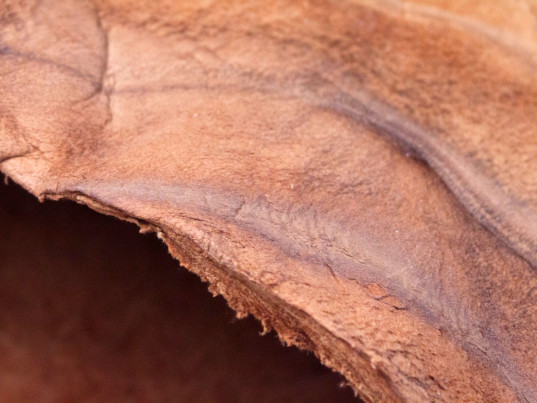
The tanning process of Muskin Fabric is also eco-friendly.
It uses non-toxic substances to color the leather making it comfortable and safe to wear next to the skin.
Muskin has great absorbency.
It can suck up moisture and slowly release it. This makes it a good fabric to use for absorbing sweat.
This vegan leather, therefore, could be used for making comfortable leather insoles for shoes, watch bands, leather gloves, and hats.
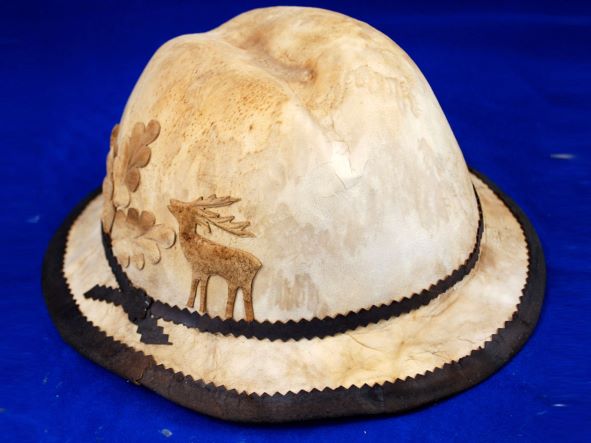
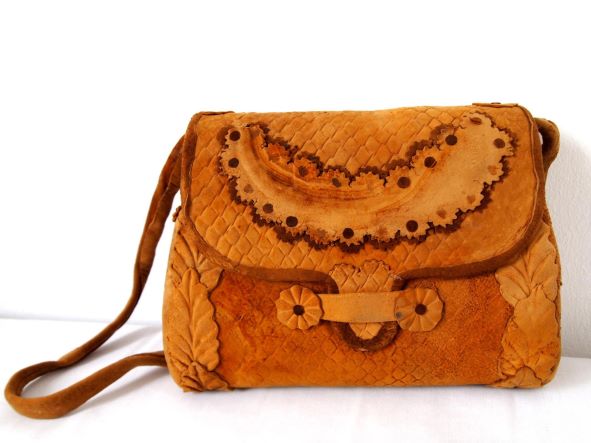
At the moment Muskin is a grown material and can only be produced in small strips roughly 40cm x 15 – 20cm.
But as technology grows so does its potential as a new replacement for all our favorite leather goods.
But leather isn’t the only material that could be replaced with a mushroom-based alternative.
Myx
Myx is another fabric that is grown from the spores of the Oyster mushroom.
Designed by Danish product designer Jonas Edvard, Myx fabric is similar in texture to felt, and can be grown around a structure to take on its shape.

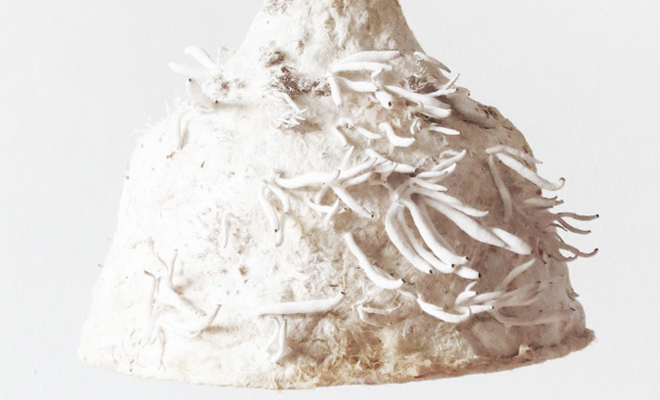
In his experiments, Edvard grew the mushrooms on a fiber mat, made from waste linen and hemp fibers.
Once the mushrooms were harvested, what was leftover was the Myx fabric.
This is a strong composite fabric created from the Mycelium, or mushroom spores being woven into the fiber mat.
The spores would grow and pull the fibers together to give it better strength, durability, and flexibility.
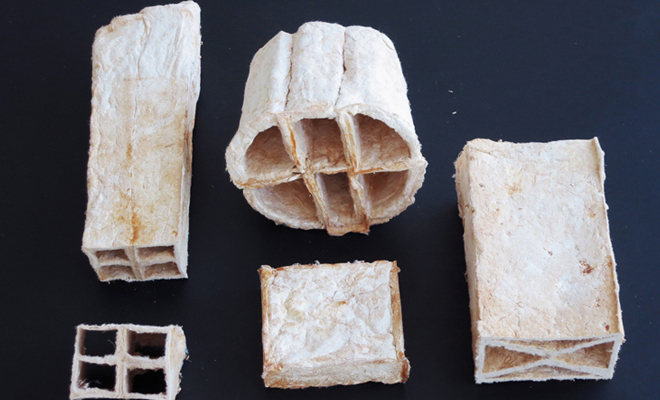
Myx could be used for many applications.
Good examples are for making products such as lampshades, hats and acoustic screens where the fabric could be grown into the desired shape instead of traditional fabric which needs to be stitched together in sheets.
MycoTEX
MycoTEX is another Mycelium based fabric, grown in Petri dishes.
Dutch designer Aniela Hoitink is the creator of MycoTEX, which has been developed as a dress and garment fabric.
Once the Mycelium is fully grown, it is “marinated” in another liquid, and then the circles of fabric are molded onto a mannequin into the shape of a dress. As the dress dries, the Mycelium sticks to itself and the dress is completed.
Hoitink came up with the idea as she considered how quickly fashions change, and how many of our outfits end up as waste.
The result is a fabric that comes from a renewable source and is both compostable and biodegradable.
Hoitink hopes that one day Fungi based textiles may even be utilized in the healthcare industry.
Some types of Fungi have anti-bacterial properties, includingresistance to Salmonella and Golden Staph, which may even replace the traditional process of impregnating fibers with silver to give it the same property.
Other Applications for Mushroom Based Materials
Growing Your Own Furniture
Sustainable Furniture is another frontier where mushrooms can be used.
Not only could products like Muskin be used to replace leather.
Some designers are also working on ways for you to grow your own furniture.
Ecovative is a company that sells DIY starter kits to interior designers, allowing them to grow their own furniture for projects.
These kits have already been used to create furniture such as lampshades for commercial projects.
Biodegradable Packaging
Non – recyclable packaging is a huge problem, with tonnes of waste plastic floating around in our oceans.
Ecovative has used similar technology to create compostable packaging from mushrooms.
This biodegradable packaging is currently used by Microsoft for some of its products and will compost in 30 days.
The company has now won a Cradle to Cradle award for its products.
This award is for products that have a sustainable lifecycle from start to finish.
Building Sustainable Homes
Mushrooms are also being developed for use as building materials.
Companies such as Mycoworks are making bricks out of Mycelium and testing their properties against traditional building materials such as clay and cement. Some of the results are amazing.
There is a great video on their site showing how these Mycelium bricks can even surpass cement bricks in their toughness and resistance.
Similar to the Myx fabric, these building materials can be made with a substrate from agricultural waste materials such as sawdust.
The Mycelium from the mushrooms acts as a glue to hold it together, so the majority of the material is sustainably sourced.
Final Thoughts
Mushrooms are a pretty amazing plant, and we look forward to seeing what other amazing products will be created that will change the way we live.
Looking for other innovative ideas for living a greener lifestyle?
Why not try growing and experimenting with plants of your own?
Click here to read more about the best hydroponic plants to grow indoors about how this can benefit your health and the environment.
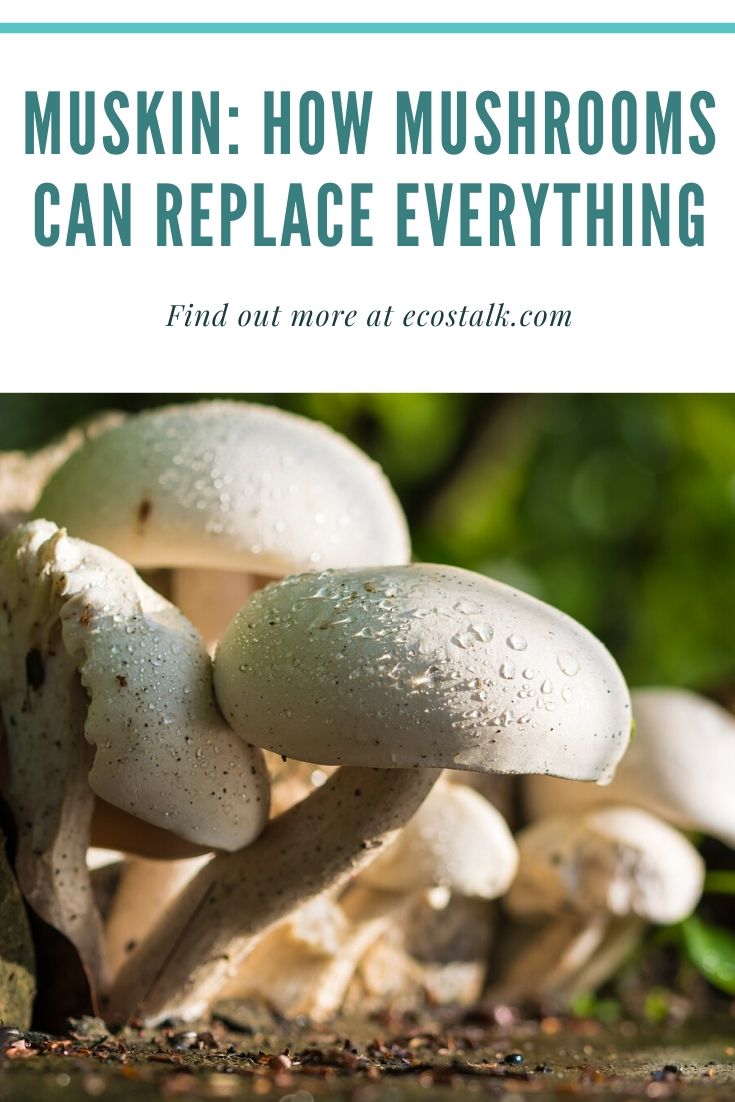


hello,
My name is Rodrigo Jimenez, i reside in Tijuana Mexico. My interest is to become involved in the production of textiles from mushrooms. Is it possible for you to provide more information on how to become involved in this business?
Thank you kindly for your help.
Hi Rodrigo,
Thank you for your interest in our post!
May I suggest you contact one of the manufacturers I have mentioned in this post –Zero Grado Espace are the makers of Muskin, and they may be able to provide you with the information you need.